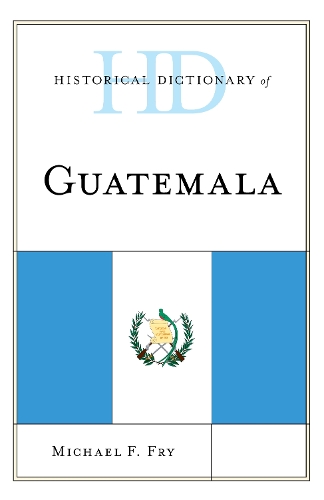
Historical Dictionary of Guatemala
(Hardback)
Publishing Details
Historical Dictionary of Guatemala
By (Author) Michael F. Fry
Bloomsbury Publishing PLC
Rowman & Littlefield Publishers
20th February 2018
United States
Classifications
General
Non Fiction
History of the Americas
Reference works
972.81003
Physical Properties
Hardback
472
Width 161mm, Height 243mm, Spine 39mm
871g
Description
Guatemala holds a dual image. For more than a century, travel writers, explorers, and movie producers have painted the country as an exotic place, a land of tropical forests and the home of the ancient and living Maya. Archaeological ruins, abandoned a millennium ago, have enhanced their depictions with a wistful, dreamy aura of bygone days of pagan splendor, and the unique colorful textiles of rural Maya today connect nostalgically with that distant past. Inspired by that vision, fascinated tourists have flocked there for the past six decades. Most have not been disappointed; it is a genuine facet of a complex land. Guatemala is also portrayed as a poor, violent, repressive country ruled by greedy tyrants with the support of an entrenched elitethe archetypal banana republic. The media and scholarly studies consistently confirm that fair assessment of the social, political, and economic reality. The Historical Dictionary of Guatemala contains a chronology, an introduction, and an extensive bibliography. The dictionary section has over 700 cross-referenced entries on important personalities, politics, economy, foreign relations, religion, and culture. This book is an excellent resource for students, researchers, and anyone wanting to know more about Guatemala.
Reviews
"This entry from the Historical Dictionaries of the Americas series is an entirely new volume; a previous version by a different author appeared in 1973. . . . The more than 700 entries in the dictionary vary in length from a short sentence to a few pages and cover people, places, culture, politics, the economy, and more. The topics cover quite a bit of territory, from the kaqchikels (a large Maya ethnic and linguistic group), to Nobel Peace Prize winner Rigoberta Menchu, to Protestantism. Entries include generous cross-references. In the case of Catholicism, for instance, the list of see also references is longer than the entry itself. The book concludes with an extensive bibliography, divided into sections starting with an introduction and including materials on topics from the pre-Columbian period to the twenty-first century. A fair percentage of these materials refer to Spanish-language publications. Recommended." --American Reference Books Annual
"The dictionary itself is an impressive achievement, combining biographical, architectural, artistic, historical, documentary, and linguistic information." --Hispanic American Historical Review
Author Bio
Michael F. Fry is professor of Latin American history at Fort Lewis College, Colorados public liberal arts college in Durango, where he teaches an array of courses on Latin America, including the history of Central America. He has lived and conducted archival research in Guatemala during three extended sojourns there, the longest for three years, and he has made many shorter research trips.
